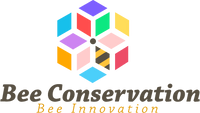thaliawhite
Team Building
Couldn't load pickup availability
The term “team building” has become a buzzword in recent years, and has many connotations. In terms of corporate development, team-building exercises are important not for the immediate experience of the activities performed by the team, but also for the group skills, communication and bonding that result. The activity, be it an obstacle course or the Chocolate Challenge, is merely the means to the end: a high-impact learning experience. Team-building programmes provide realistic experiences that empower individuals to contribute to common goals. The success of most organisations depends on the ability of individuals to build effective teams.
The main goals of team-building are to improve productivity and motivation. Taking employees out of the office helps groups break down political and personal barriers, eliminate distractions, and have fun. The benefits of team-building programs are so significant that many corporations have incorporated teambuilding strategies into their standard training curriculum.
Beehive team building. compares the work of teams with the way bees behave in a hive. It may help to raise awareness and understanding within organisations and community groups about the importance of using teams and of what makes a successful team. It may also provide ideas for looking at how existing teams perform.
The Beehive Model
Bees live in hives with clear social organisation. Each type of bee is adapted for its work. The workers change their duties as their age increases. They start by feeding the larvae; then they ventilate and cool the hive by fanning it with their wings; then they clean the hive and finally they leave on food-collecting expeditions. Bees of different ages carry out all these varied tasks at any one time.
Social ties hold the bees in the hive together. The workers lick both the larvae and the queen when they are not busy working. The workers collect food for everyone in the hive. Worker bees out collecting food, pass on messages to tell other bees where to find food. They do this by ‘dances’. On returning to the hive from the food source, two kinds of dances may be performed. If the food is less than 100 metres away the bee performs a dance in which it moves round and round in a tight circle telling the other bees food is near but not exactly where to find it. If the food is more than 100 metres away, another dance is performed which tells the other bees exactly where the food is.
What can teams learn?
The beehive has a structure that is clear and understood by all its members. The bees live together. The bees live close together and work together well.
Teams are made up of individuals, and it is their different values, skills and experiences that help the team to work well. Effective teams need a mix of people able to work together.
The expectations are very clear in the hive. The drones are expected to fertilise the queen, the queen is expected to lay eggs and the workers are expected to maintain the hive.
Division of work There is a clear division of labour in the hive, but no bee is forced to work – they do it willingly. The workers ensure that the hive has all the practical resources it needs to perform well. They change their duties as their age increases. This division of labour by each type is determined by sex, upbringing and age.
Teams should offer opportunity for individual growth and development and allow people gradually to take on more demanding and challenging work. Flexibility in teams is a great asset. Varied activities make life more exciting. Teams that offer little variety may soon lose their appeal.
Bees have clear and meaningful work – producing eggs, caring for the larvae and maintaining the hive in good order. Likewise, teams need a good balance between clear goals and maintaining or building up team members.
Support among the team’s members In the hive, there is a high degree of support among team members. Workers feed the larvae – the weak members. They also attack and, if necessary, sting intruders, sacrificing their lives in the process. They are willing to give up their lives for the well being of the hive.
Team members need to support one another. New members may need a lot of support. Belonging to a team may call for sacrifices from the members.
Communication and fun When they come back from their food expeditions successfully, the workers perform dances. Teams will not be successful without effective communication. Open communication builds trust. Teams need access to information so that members can manage themselves. Team members need to listen to each other.
Successful teams are fun. Dancing is a sign of celebration, happiness and fun. Members get a lot of satisfaction by being part of the team and may openly express excitement, enthusiasm and enjoyment while carrying out their roles and tasks.
Every time the workers come back from the food expeditions, they call for a ‘meeting’ to give feedback of the success of their trip. Frequent and regular meetings play a critical role in the success of teams. Teams must physically meet and update each other about developments in relation to the task. After the ‘meetings’, the bees go out together to get the food. Effective teams get the job done!
Bee Team Building
- Improves morale and leadership skills
- Finds the barriers that thwart creativity
- Clearly defines objectives and goals
- Improves processes and procedures
- Improves organisational productivity
- Identifies a team’s strengths and weaknesses
- Improves the ability to problem solve


